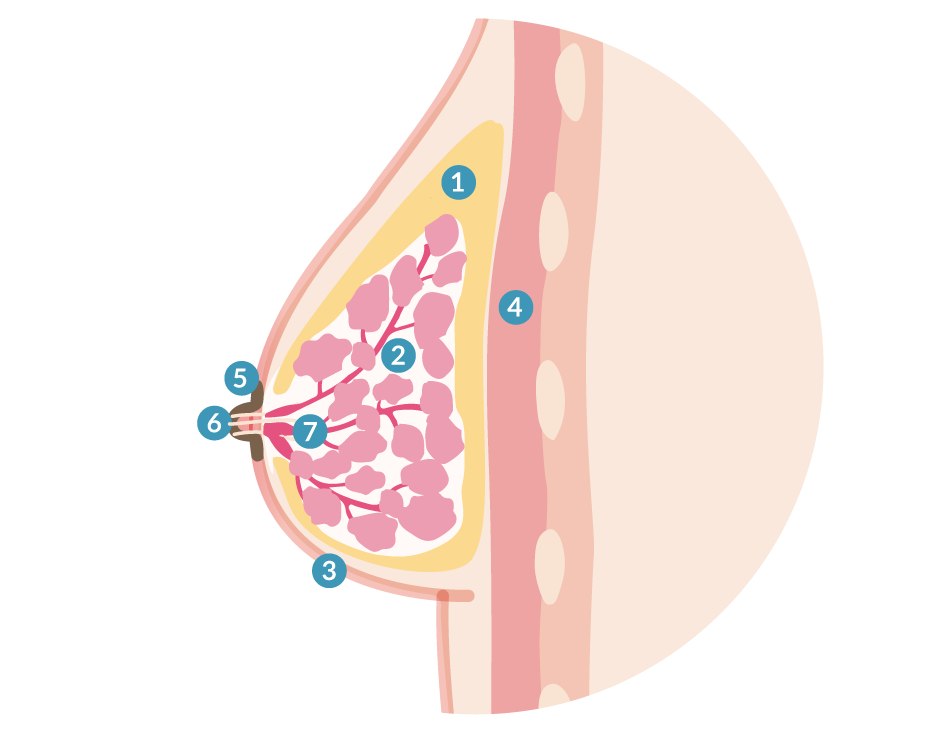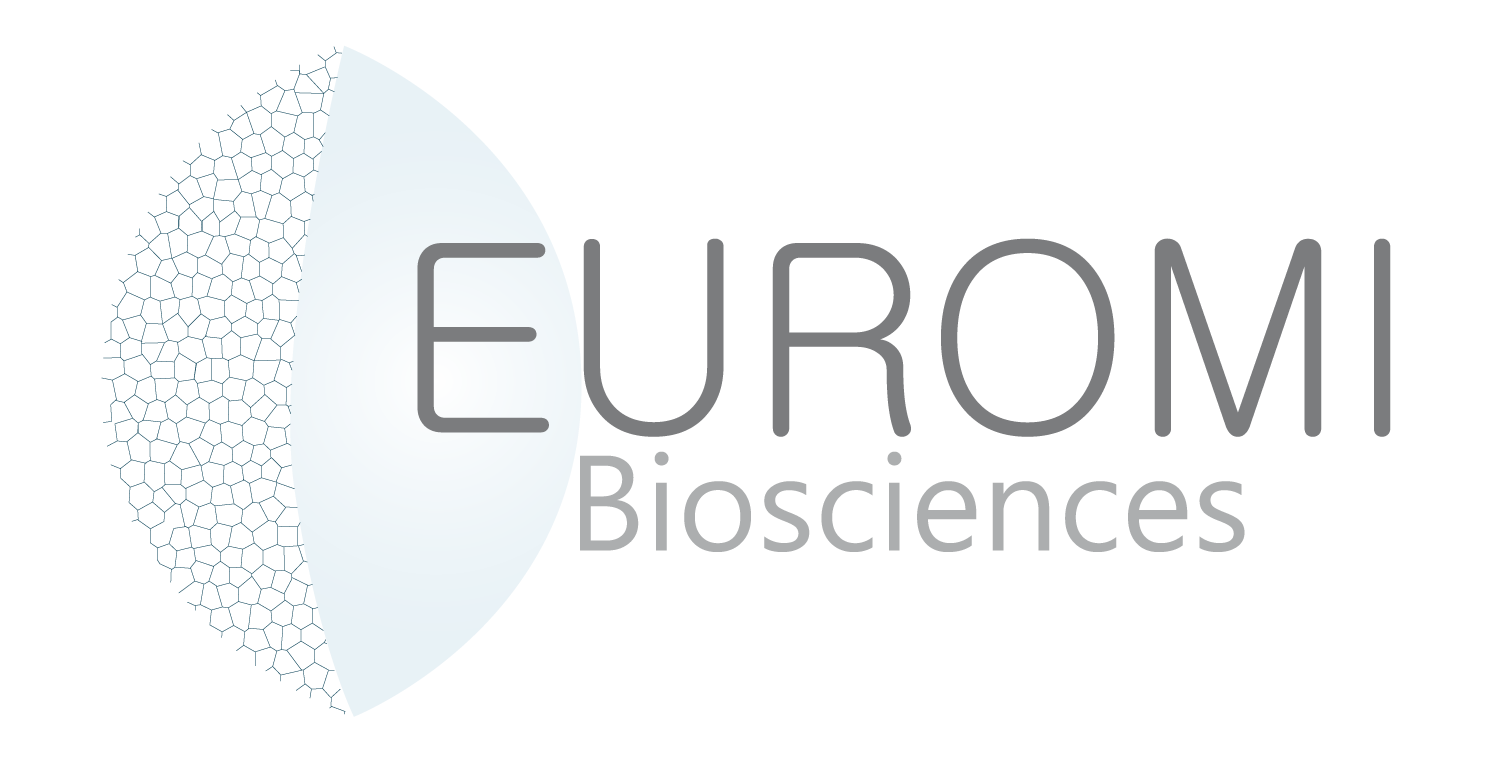This page aims to inform you about the anatomy of your breast and its biological function, but also about the different indications for breast surgery.
Why resort to this type of intervention? What are the benefits?

My breast
Anatomy and biological function

My breast
Anatomy and biological function

➊ ➋
The shape and size of the breast are determined by the adipose connective tissue (fat) ➊ and glandular tissue ➋ .
➊ ➋
The suppleness of the breast depends on the proportion of glandular tissue ➋, which, with age, is gradually replaced by adipose tissue ➊ which is less firm. The breast volume depends on factors such as age, skin elasticity, previous pregnancies, physical activities, etc.
➌ ➍
The breasts do not contain muscles but they have support ligaments which connect
the skin ➌ to the pectoral muscles ➍. The pectoralis major muscle is used when we move our arms. They bear their own weight and naturally tend to sag over time (known as breast ptosis).
➎ ➏
The areola ➎ is the pink or brown area around the nipple ➏.
➏ ➐
Given that the primary natural role of the breast is lactation (the production of milk after
childbirth), the role of the mammary ducts ➐ is to carry the milk to the nipple ➏.
➊ ➋
The shape and size of the breast are determined by the adipose connective tissue (fat) ➊ and glandular tissue ➋ .
➊ ➋
The suppleness of the breast depends on the proportion of glandular tissue ➋, which, with age, is gradually replaced by adipose tissue ➊ which is less firm. The breast volume depends on factors such as age, skin elasticity, previous pregnancies, physical activities, etc.
➌ ➍
The breasts do not contain muscles but they have support ligaments which connect
the skin ➌ to the pectoral muscles ➍. The pectoralis major muscle is used when we move our arms. They bear their own weight and naturally tend to sag over time (known as breast ptosis).
➎ ➏
The areola ➎ is the pink or brown area around the nipple ➏.
➏ ➐
Given that the primary natural role of the breast is lactation (the production of milk after
childbirth), the role of the mammary ducts ➐ is to carry the milk to the nipple ➏.
Indications
Breast implant surgery can be indicated for different reasons:
For young women, it is recommended to wait until the end of puberty and to comply with the minimum legal age in the country of the procedure.

Indications
Breast implant surgery can be indicated for different reasons:
For young women, it is recommended to wait until the end of puberty and to comply with the minimum legal age in the country of the procedure.

For breast reconstruction due to cancer (following a mastectomy), the psychological benefits are important. This is a chance for the woman to recover her body image and forget her disease.*
In aesthetic and plastic surgery, breast augmentation with implants generally restores the woman’s self-esteem and self-confidence and enhances her sense of womanhood.*
*According to Clinical litterature review

Whatever the indication, the psychological benefit is undeniable and makes an essential contribution to the expected results.






